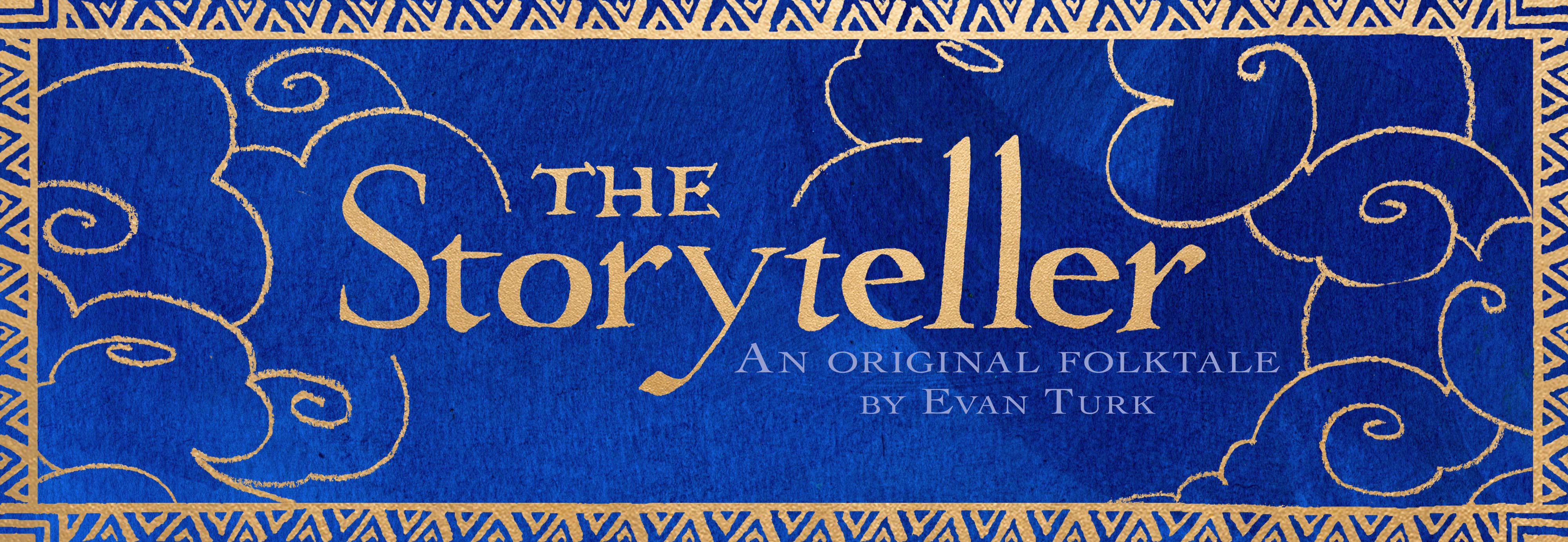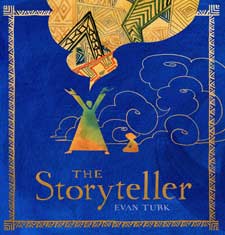In October 2014 I took a trip to Morocco to do research for The Storyteller. One of my favorite experiences was spending a day in the village of Anzal in southern Morocco and meeting the women carpet weavers there and their family. These drawings (aside from the illustrations from the book at the end) were done on-location in Anzal and the nearby Oasis de Fint.
I arrived at the village of Anzal and met, Naoual, a twenty two year old woman from the village who translated for me and told me about her village and the weaving association. The village is nestled in a valley between harsh, dry mountains. The landscape is both empty and calming. The ground and sky seem to extend in all directions for eternity. It is said that the top crossbar of a loom is often called “the beam of heaven” and the bottom bar, “the earth”, with everything between as “creation.”
Naoual led me the short distance to the Association where I met Aicha, Fatima, and Rahma, Naoual’s mother-in-law. Aicha and Rahma were seated in front of their looms, made out of red steel I-beams and heavy wooden crossbars. A net of vertical yarns, the warp, stretched between the two crossbars in front of each weaver. Beside them were bags and cans of brightly colored, short pieces of yarn that would be knotted individually around each of the warp threads into a colorful design, the weft.
Fatima sat nearby Aicha, taking tufts of wool and winding them into yarn on a spindle, whirring between her fingers.
Aicha’s hands worked quickly, knotting each row, and then smacking the knots down with a comb called a taskaa, which resembled a big spider.
Spiders are often associated with weavers, and their magical creative ability in forming webs. The act of weaving feels both magical and utilitarian. When you see a finished carpet, the staggering amount of work is both hidden behind the beauty, but also evident in each individual knot.
Patterns spread across the warp, slowly appearing as the weaver moves from side to side, row to row. Symbols, triangles, diamonds, zig-zags, and other shapes emerge. The symbols are infused with historic meaning, but also with the individual whims of the weavers.
I watched as Rahma struggled in contemplation in the early stages of her weaving, trying to decide on a color and a direction. The dreaded “blank page syndrome” that plagues all artists at some point, manifests in the even more daunting “blank loom” which will be the home for her hands for the next many hours and days.
Naoual showed me her family’s sheep pen (who’s wool is taken for the carpets), and led me to her own house for tea and lunch with her mother-in-law, Rahma, and Fatima, the spinner. I listened as they all spoke back in forth in Tamazigh, as Naoual tried to keep me up to speed on the conversation. We discussed the growing presence of Tamazigh people in the national conversation, as it became an official language in Morocco, in addition to Arabic. Over 80% of the population of Morocco has Tamazigh ancestry, but their language was not recognized until recently. New possibilities are growing as the diversity of the country is embraced.
Naoual and her friend then took me on a small tour of the gardens behind the town. She showed me the water source, where Anzal’s water is filtered in from a nearby spring. The water descends from the spring into two divergent paths, towards the reservoir, or off towards the village. Trees line the cement channel made for the water. Twinkling olive trees baked in the sunlight, and shriveled pomegranates littered the ground with their seeds. The gentle breeze flowed through the valley, as if it had come from far off mountains, and the eternity of ground and sky. We talked about our lives, the differences and similarities, hopes and possibilities. As the sun began to set, we made our way back to the Association.
We left the open valley and returned to the unadorned room with the weavers.
A new weaver, Fatima, joined them with her carpet stretched on the loom. Undulating mountainous forms (or are they clouds?) overlap and emerge as she worked. The pattern grows, creating both ground and sky within the confines of her warp, but extending in all directions into infinity.
We then went to her mother’s house where I met her mother, brother, and sisters as we ate bread, honey, almonds, and ground dates, and laughed while sipping our hundredth cup of delicious mint tea.
She took me to her aunt’s house where her cousins, aunt, and grandmother were doing household chores and weaving.
Her grandmother, with high, bronze cheeks and a warm smile, cracked almonds from their trees out of their shells with a stone in the back. She laughed as she saw her portrait, saying she couldn’t wait to tell her son that today she met a man from America who said she looked like his own grandmother.
The act of weaving is often related to that of speech, or storytelling. A tale is referred to as a “good yarn” and stories are “woven” in twists and turns. The words “text” and “textile” even come from the same Latin root, texare, which means “weaving.” The looms serve as repositories for words and thoughts not necessarily spoken. Patterns and symbols come together across the landscapes of the carpets, often with stories of pregnancies, births, deaths, and weddings. Like scrapbooks, created over months, the knots are woven in time as life events unfold. Older carpets seem to have been formed organically, with no plan in mind. There is just the warp to hold it together, and life to fill in the spaces as it comes.
In the ebb and flow,
In warp and weft,
Cradle and grave,
An eternal sea,
A changing patchwork,
A glowing life,
At the whirring loom of Time I weave
The living clothes of the deity.
Goethe, Faust




















No Comments
Trackbacks/Pingbacks